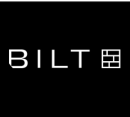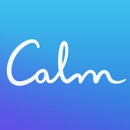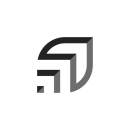Sometimes a seemingly small side project can become a milestone on a product roadmap — just ask the engineering team at Calm.
“On our teams, we encourage side projects throughout the year, which have led to both technical improvements and exciting user-facing product enhancements,” Yusuf Modan, senior engineering manager, said.
Modan shared that user-generated playlists were often requested by users, so it became a small side project for a back-end engineer on the team. The engineer saw its potential and pitched it for the product roadmap during a brainstorming session.
“It went on to production as one of Calm’s most engaging feature launches of the year,” Modan said.
At Flourish, the engineering team brings similar “side projects” into the interview process for team candidates.
“A major part of our engineering interview process includes a hackathon-style project, where the prospective candidate collaborates on a short project for a day with the panel of interviewers from the Flourish team,” VP of Engineering Andrew Loyola said. “This is an opportunity for all participants to try out technologies or patterns that we may have been evaluating or even things that the team has read about in industry chatter, blogs or publications.”
The result is a double-hitter that lets hiring managers see how candidates do with collaboration and gives the team fresh legs while trying out a new play.
Meanwhile, Bilt’s VP of Engineering Will Laughlin shared that making time for experimentation is a core strength of his engineering team — even if it impacts the speed of production.
“We encourage experimenting with new technologies even when it temporarily affects velocity,” Laughlin said.
Making time for pitch sessions, experimentation and creative brainstorming are all strategies for success on some of the best engineering teams in tech today. Built In spoke with three engineering leaders about how their teams promote innovation and experimentation all year round.
Bilt is a fintech company that allows renters to earn points on rent payments, which can be redeemed for travel, fitness and other perks.
What practices does your team employ to foster innovation? How have these practices led to more creative, out-of-the-box thinking?
First, we run companywide AI hackathons where all regular work pauses, allowing our entire team to focus on leveraging cutting-edge AI tools. This has produced remarkable results, including a comprehensive set of AI instructions for our codebase, Model Context Protocol servers and reusable workflows for pull request creation and review. These outputs aren’t just prototypes — they’ve transformed our development practices.
We also host biweekly “pizza, wings and drinks” knowledge-sharing sessions where team members present technical discoveries in a casual environment that encourages experimental thinking.
Most importantly, we encourage experimenting with new technologies even when it temporarily affects velocity. For example, we’ve adopted GCP Spanner for our benefits recommendation engine, dramatically improving scalability, and introduced GoLang services despite being primarily a Java shop. Not every experiment is adopted across the company, but there’s also value in finding out what doesn’t work, and therefore we even consider a “failed experiment” a success.
How has a focus on innovation increased the quality of your team’s work?
Our innovation mindset has tangibly elevated our work quality. The AI workflows developed during a hackathon have dramatically accelerated our development cycle, while our AI-powered pull request creation and review tools consistently catch subtle bugs and edge cases that human reviewers might overlook.
Another example is our adoption of an outbound proxy infrastructure that centralizes fault tolerance and flow control at the edge. This introduced comprehensive capabilities including retry logic, circuit breaking, throttling and caching. Beyond performance improvements, this architectural shift enhanced security by creating a single monitoring point for all egress traffic.
Our experimental introduction of Golang services has yielded measurable benefits with reduced memory footprint and faster startup times. These improvements translate directly to applications that deploy more quickly, scale more efficiently and run more cost-effectively.
How has a focus on innovation bolstered your team’s culture? Do these different practices give team members greater chances to bond and have fun?
Our openness to new technologies has cultivated a learning culture where personal growth and company success go hand in hand. And most importantly, I think most engineers will agree that there’s something really exciting about being able to tinker with the latest and greatest technologies and workflows out there, especially when you can do it with your team.
Calm is a mental healthcare software company that produces meditation products, including guided meditations and Sleep Stories on its subscription-based app.
What practices does your team employ to foster innovation? How have these practices led to more creative, out-of-the-box thinking?
At Calm, we use a combination of company and team-level practices to foster innovation. We host regular hackathons and demo days to showcase recent feature launches throughout the org. The hackathons are open to all employees, bringing in an interesting mix of cross-functional employees, many of whom are not directly involved in the software development process.
On our teams, we encourage side projects throughout the year which have led to both technical improvements and exciting user-facing product enhancements. One example is the user-generated playlists feature, which was a long-requested feature by users. A back-end engineer prototyped the feature in our iOS app, demoed it and, through some persistence, was able to get the feature on our roadmap. It went on to production as one of Calm’s most engaging feature launches of the year.
As a remote team, we also prioritize in-person time for innovative brainstorming. Our sessions — which include research analysis, idea pitching and ideation exercises — allow our engineers to directly influence quarterly roadmaps.
How has a focus on innovation increased the quality of your team’s work?
We have improved the quality of our team’s work through innovation by empowering engineers to pursue technical investments alongside product goals. We create space for engineers to pursue side projects and try to pair them with feature work. This has resulted in the creation of some great internal tooling that has increased our velocity and product quality.
A notable example of this was when a web engineer was tasked with building a custom landing page for a partner promotion with Calm. Building the page was simple but repetitive and time-consuming. Previously, the engineer had explored building a full content management system at scale as a side project, but it proved to be impractical due to the scope and technical complexity of that project. Recognizing a pattern of requests to build partner landing pages, the engineer was able to repurpose components from his prior project to build out an internal tool allowing our partnerships team to independently create these pages. Our partnerships team can now create highly configurable, branded landing pages quickly and reliably without involving engineering.
How has a focus on innovation bolstered your team’s culture? Do these different practices give team members greater chances to bond and have fun?
We have seen innovation create a sense of pride, ownership and ultimately increased employee engagement. When the user-generated playlists project was added to the roadmap, it sparked genuine interest with multiple engineers asking to be part of the project. It quickly became a team effort that energized the team. After launching the feature, engineers continued to show deep interest by proactively asking for engagement metrics and even building on top of the playlists feature through two hackathon projects later that year.
As a management team, we encourage our engineers to participate in hackathons, side projects and pitch new ideas even when they might not ship. We believe giving our engineers space to innovate keeps the work more engaging and strengthens the culture of the team.
Flourish is a fintech platform that provides innovative financial solutions to help advisors and their clients grow wealth.
What practices does your team employ to foster innovation? How have these practices led to more creative, out-of-the-box thinking?
A major part of our engineering interview process includes a hackathon-style project, where the prospective candidate collaborates on a short project for a day with the panel of interviewers from the Flourish team. This is an opportunity for all participants to try out technologies or patterns that we may have been evaluating or even things that the team has read about in industry chatter, blogs or publications. Past examples include technology like WebSockets or command-line-interface packages that can inform internal tooling. The team has even tried out not-currently-used browser features or frontend frameworks or newer React versions or related client-side UI libraries (examples might include AGGrid or Tailwind). Spinning up new and interesting ideas in this context helps us gain insight on evolving technology in a lower-stakes environment, while giving the candidate a chance to experience our collaborative working style and culture.
How has a focus on innovation increased the quality of your team’s work?
Flourish engineering strives to instill a sense of ownership in the engineer’s code and technology. We often use a mantra that can be summarized as “the designs and business specifications will never tell the whole story of what should be implemented in code” as a reminder that the engineers can and should think about how best to shepherd their technology into the future.
This strategic thinking is an important and necessary part of how we foster and develop new ideas over time while meeting the needs to keep the business moving forward. We’ve seen this in several areas; we have a quality assurance automation team that has built full-featured infrastructure and tooling to help us both run and analyze automated tests and test data over time. We’ve also seen systems that we built in prior years evolve as our user base and our product needs have scaled to incorporate more patterns like relationship-based access control using technologies like SpiceDB. These are driven by engineers understanding the context of what is prevalent in the industry and having the agency to work to improve the technology that they own.










